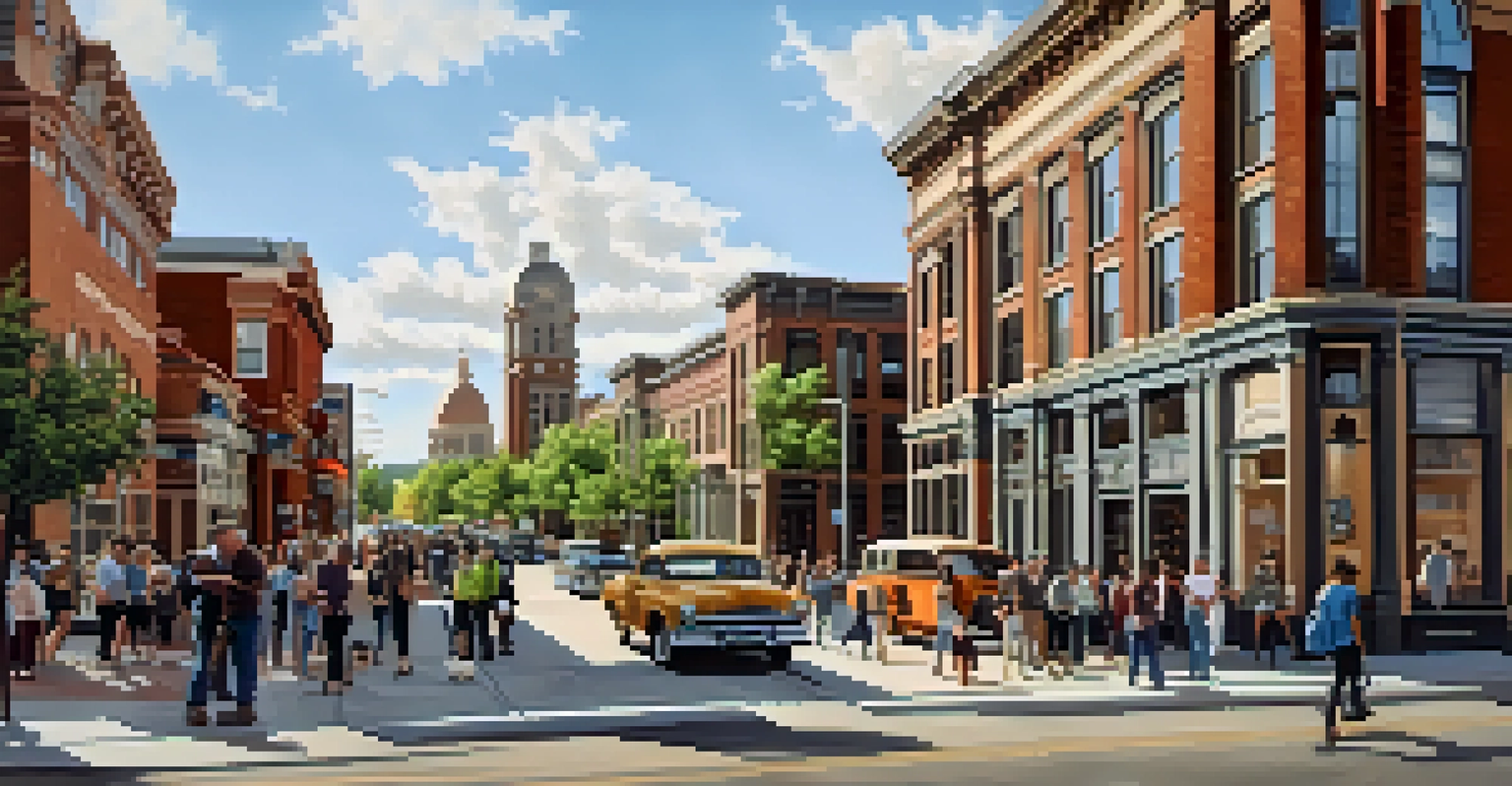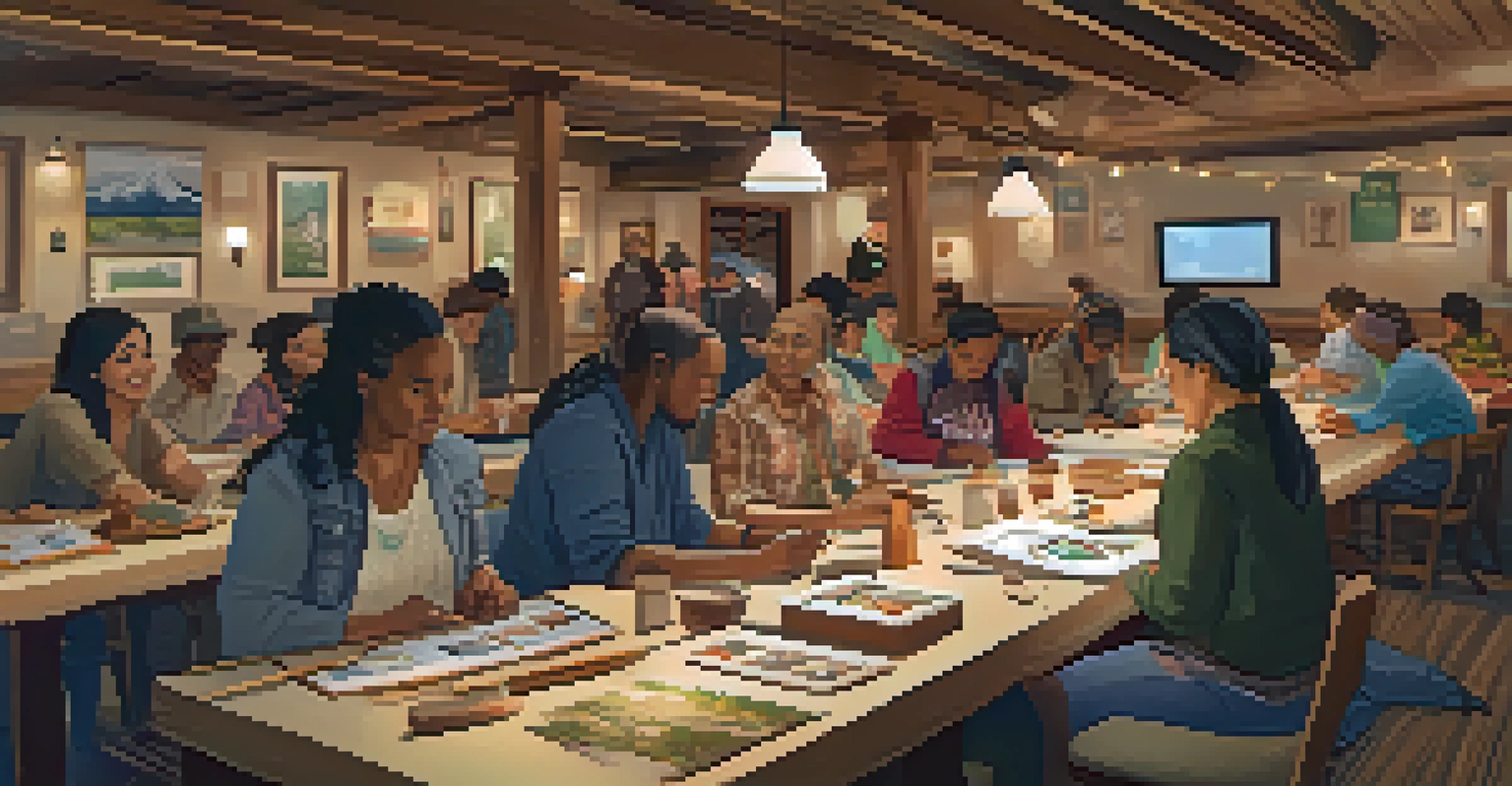Cultural Preservation: Challenges Facing Colorado's Heritage

Understanding Cultural Preservation in Colorado
Cultural preservation involves safeguarding the traditions, languages, and artifacts that define a community's identity. In Colorado, this means protecting the rich tapestry of Native American heritage, pioneer history, and diverse immigrant contributions. The state's unique blend of cultures creates a vibrant narrative, but it also presents unique challenges in preservation efforts.
Preservation of one's own culture does not require contempt or disrespect for other cultures.
As Colorado continues to grow and evolve, the need to balance development with preservation becomes increasingly important. Land use changes, urban expansion, and tourism can threaten the sites that hold historical significance. By understanding what cultural preservation means, we can begin to appreciate why it is critical to protect Colorado's heritage.
Moreover, cultural preservation is not just about maintaining physical sites; it also encompasses the stories, practices, and languages that have shaped Colorado's communities. Engaging local populations in these conversations is essential to ensure that their voices are heard and respected in the preservation process.
The Impact of Urbanization on Heritage Sites
Urbanization, while often seen as a sign of progress, poses significant threats to heritage sites across Colorado. As cities expand, many historical landmarks are at risk of being demolished or altered beyond recognition. This change can erase the visual and narrative aspects of local history, depriving future generations of their cultural roots.

For instance, the development of housing complexes or commercial establishments can encroach upon sacred Native American sites, which hold immense spiritual significance. These conflicts highlight the delicate balance between meeting modern needs and honoring the past.
Cultural Heritage Needs Protection
Cultural preservation in Colorado is essential for safeguarding the diverse traditions and histories that define its communities.
Community advocacy plays a vital role in addressing these challenges. By raising awareness and pushing for protective measures, local residents can help ensure that their heritage remains intact amidst the pressures of urban growth.
The Role of Technology in Cultural Preservation
Technology has emerged as a powerful ally in the fight for cultural preservation, providing innovative ways to document and share heritage. Digital tools, such as 3D scanning and virtual reality, allow us to create detailed records of historical sites and artifacts, making them accessible to anyone, anywhere. This not only helps preserve the physical aspects of culture but also makes it easier to share stories with a global audience.
The past is never dead. It's not even past.
Furthermore, social media platforms can amplify local voices, raising awareness about preservation efforts and mobilizing support. By engaging younger generations through technology, we can foster a deeper appreciation for cultural heritage and inspire them to take part in preservation initiatives.
However, it's essential to approach technology with caution. Over-reliance on digital representations can sometimes overshadow the importance of experiencing cultural heritage in person, which is a vital part of the preservation experience.
Funding Challenges for Preservation Initiatives
One of the most significant hurdles facing cultural preservation efforts in Colorado is securing adequate funding. Many organizations rely on grants and donations, which can be inconsistent and difficult to obtain. This financial instability often leads to delays in projects or even the cancellation of preservation initiatives altogether.
Moreover, as the demand for community resources grows, funding can be diverted towards more immediate needs like housing and infrastructure. This creates a challenge for cultural organizations that struggle to compete for limited financial support, hindering their ability to preserve vital components of Colorado’s heritage.
Urbanization Threatens Heritage Sites
As urban development expands in Colorado, historical landmarks face risks of demolition or alteration, jeopardizing local cultural identity.
To overcome these obstacles, creative fundraising strategies must be employed. Collaborations with local businesses, crowdfunding campaigns, and community events can help generate the necessary funds to sustain preservation efforts and keep cultural heritage alive.
The Importance of Community Involvement
Community involvement is critical for successful cultural preservation in Colorado. Local residents hold valuable knowledge about their heritage, traditions, and the significance of historical sites. By including community voices in preservation efforts, we can ensure that the initiatives are relevant and resonate with those most affected.
Engaging the community also fosters a sense of pride and ownership over local heritage, motivating individuals to actively participate in preservation activities. Workshops, educational programs, and heritage events can strengthen this connection and encourage more people to get involved.
Ultimately, when communities come together to champion their heritage, the preservation efforts are more likely to succeed, creating a lasting impact that benefits both present and future generations.
Balancing Tourism and Heritage Preservation
Tourism can be a double-edged sword when it comes to cultural preservation. On one hand, it brings much-needed revenue and attention to historical sites; on the other, increased foot traffic can lead to wear and tear on these precious resources. Striking the right balance between attracting visitors and preserving the integrity of Colorado's heritage is essential.
For instance, popular destinations like Mesa Verde National Park face challenges in managing visitor numbers while ensuring the protection of ancient dwellings. Implementing sustainable tourism practices can help mitigate the impact on these sites and promote responsible visitation.
Community Involvement is Key
Engaging local communities in preservation efforts fosters pride and ensures that initiatives resonate with those most affected.
By educating tourists about the significance of these heritage sites and encouraging respectful behavior, we can foster a culture of appreciation that benefits both visitors and local communities alike.
Legislation and Policies Affecting Preservation
Legislation plays a crucial role in cultural preservation, providing the framework for protecting historical sites and artifacts. In Colorado, various laws and policies are in place to safeguard cultural heritage, but there are often gaps that need to be addressed. Understanding these regulations is vital for anyone involved in preservation efforts.
For example, the National Historic Preservation Act provides guidelines for identifying and protecting significant cultural resources. However, not all sites receive the recognition they deserve, which can leave them vulnerable to threats. Advocating for stronger laws and better enforcement can help close these gaps and ensure comprehensive protection for Colorado's heritage.

Moreover, public awareness of these policies is essential. When communities are informed about their rights and the protections available to them, they are more likely to engage with the preservation process and advocate for their cultural heritage.
Looking Ahead: The Future of Cultural Preservation
As we look to the future, the challenges of cultural preservation in Colorado will continue to evolve. Climate change, shifting demographics, and technological advancements will all impact how we approach preservation efforts. By staying adaptable and open to new ideas, we can find innovative solutions to these challenges.
Collaboration among various stakeholders—government agencies, local communities, and preservation organizations—will be vital in shaping a sustainable future for Colorado's cultural heritage. Ongoing dialogue and shared goals can create a united front, ensuring that preservation remains a priority.
Ultimately, the future of cultural preservation lies in our collective hands. By valuing and protecting our heritage today, we can pass down a rich cultural legacy to future generations, allowing them to celebrate and learn from the diverse history that shapes Colorado.